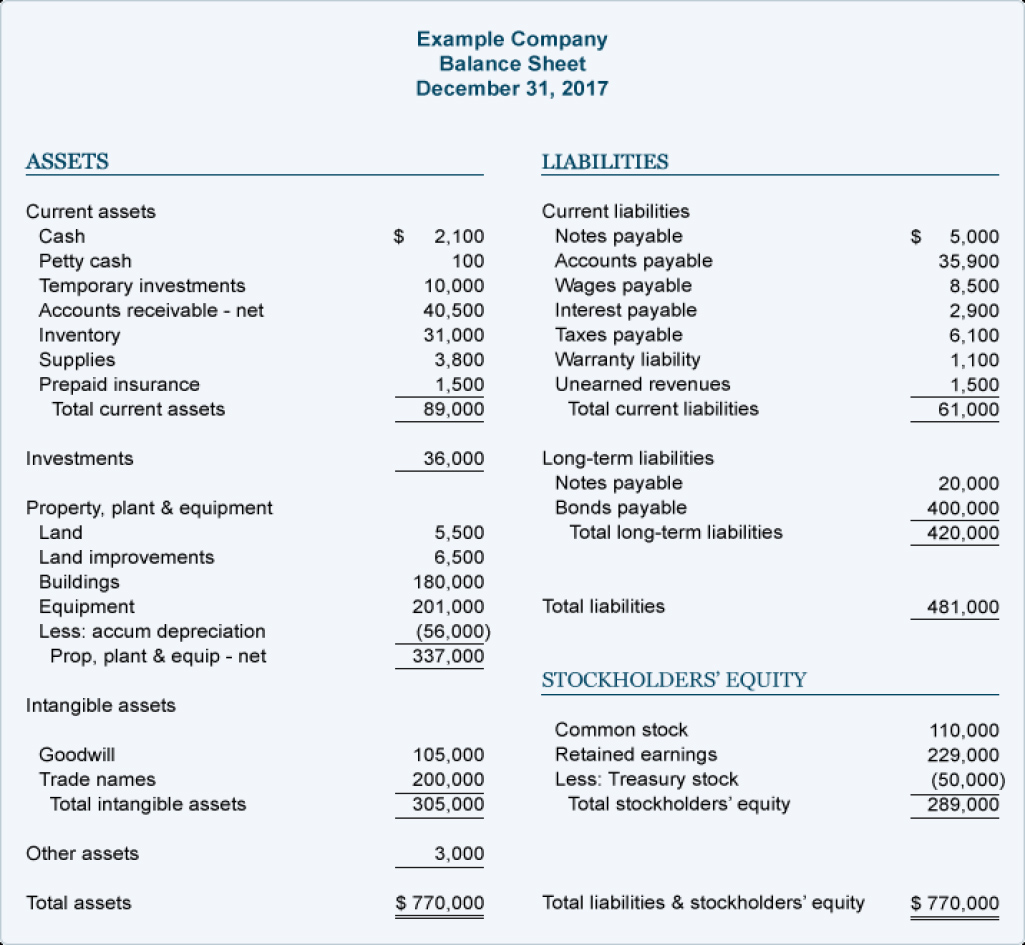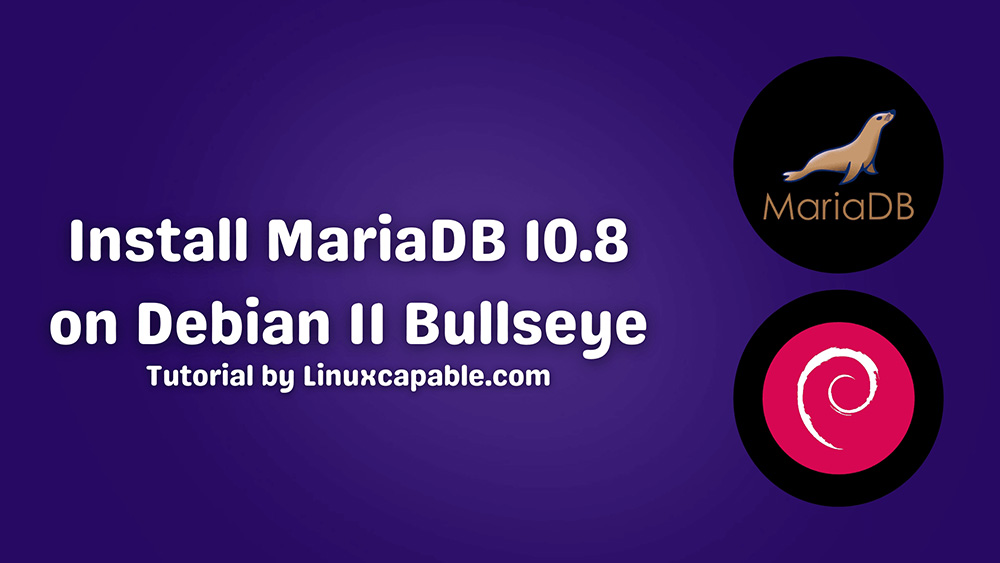CPA REG Review Individual Note R4
R4 Professional and Federal Tax Procedures
1 Circular 230
◾1 Overiview
Subpart A Rules governing the authority to practice before the IRS
Subpart B The duties and restrictions relating to practice before the IRS
Subpart C The Sanctions for violation of the regulations;
Subpart D The rules applicable to disciplinary proceeing.
Subpart E General Provision
◾2 Authority to Practice (Subpart A)
Attorneys | Certified Public Accountants | Enrooed Agents | Enrolled Actuaries | Enrolled Retirement Plan Agents | Registered Tax return preparers | Other persons allowed to represent a taxpayer before the IRS in limited circumstances.
◾3 Duties and Restrictions Relating to Practice Before the IRS(Subpart B)
3.1 Info to be Furnished to the IRS (Section 10.20)
The practitioner may withhold info or records he believes in good faith and on reasonalbe grounds to be privileged.
If the practitioner does not posses the IRS-requested info or records but knows who does ,he must so inform the IRS.
3.2 Knowledge of Client Omission (Section 10.21)
Konws of a client's noncompliance with federal tax law or error or omissions on a tax return or ther document must advise the client of the consequences the .....
3.3 Diligence as to Accuracy (Section 10.22)
Due diligence ,relies on, Reasonable care with respect to the such reliance.
3.4 Prompt Disposition of Pending Matters(Section 10.23)
No practitioner may unreasonably delay any matter before the IRS
3.5 Assis from or to Disbarred or Suspended Persons and Former IRS EEs( Section 10.24)
no pracititioner can directly or indirectly accept help under disbarment or suspended from practice before IRS , It would be violated.
3.6 Practice by Former Goverment Employees,Their Partner, and their Associates(Section 10.25)
- "Personally and substantially participated"in a particular matter Involving specific parties : Can never represent or assistant particular matter.
- "Official resppnsibility"for a paritcular matter Involving specific parties, the individual within two years after leaving government can not represent parties with respect to that particular matter.
- One year after leaving government employment, participated in the development of the rule or offical responsiblity .
3.7 Notary (Section 10.26)
A practitioner may not act as a notary public for his clients on any tax matter.
3.8 Fees (Section 10.27)
A practitioner may not charge an unconsicionable fee in connection with any matter before the IRS.
Allow the followin three situations:
- IRS examination of, or challenge to the original tax return (Audit)
- Claim solely for a refund of interest and/or penalties.
- A judicial proceeding arising under the IRC
3.9 Returns of Client's Records (Section 10.28)
must return all client records.
Retain the records in the case of a fee dispute, for reasonable access to review an copy any client records.
3.10 Conflict of Interest (Section 10.29)
Exception :
Competently represent each: reasonable believes that he/she can competently represent each of the client.
Non Law Prohibit: no state or federal law prohibits such representation
Writing Consent : gives informed consent and writing within 30 days after giving informed consent.
3.11 Solicitition (Section 1030)
May not containing a false, fraudulent, or coercive statement or claim, or a misleading or deceptive statement or claim.
Written schedule of Fees : must honor 30-days period.
Communicating Fee information :
- In the case of radio,TV,Broadcast : must retain a recording of the actural transimmision
- Direct mail and e-commerce communications: Must retain a copy of the actual communication.
- Copies must be retained 3 years from the date of the last transimission or use.
3.12 Negotiation of Taxpayer checks(Section 10.31)
May not endorse or otherwise negotiate any refund check issued to a client.
3.13 Practice of Law (Section 10.32)
Circular 230 may not be construed as authorizing persons not members of the bar to practice law.
3.14 Best practices for Tax Advisors (Section 10.33)
High-quality representationby adhering to "Best Practices"in providing tax preparation advice or assistance in a submission to the IRS.
3.15 Competence (Section 10.35)
Must possers the necessary competence to engage in practice before the IRS.
◾4 Standards with Respect to Tax Return s and Documents,Affidavits,and other Papers (Subpart B 10.34)
4.1 Tax Returns
A practitioners may not willfully or recklessly sign a tax return or advise a client to take a tax position that the practitioner knows or should know lacks a reasonable basis, is an unreasonalbe position, is a willful attempt to understate tax liability,or recklessly or intentionally disregards the tax rules and regulations.
4.2 Documents ,Affidavits, and Other Papers
4.3 Advising Clients on Potential Penalties
Must inform the client any penalties "reasonably likely" to apply with respect to position,any documents submitted , discloses the position to avoid penalties.
4.4 Practitioner's Reliance on information Furnished by Client
Rely "in good faith without verification", can not ignore the implications of such info or contradictory info : must make reasonable inquiries if the info furnished by the client questionalbe or incomplete.
◾5 Written Advice (Subpart B 10.37)
Written advie (include electronic communication) :
base reasonable factual and legal assumptions, all relevant facts and circumstances ,reasonable efforts to identify and ascertain the facts. relate appliable law and authorities to facts.
Must not in evluating a federal tax matter ,take into account the possibility that a tax return will not be audited or that a matter will not be raised on audit.
◾6 Compliance (Subpart B 10.36)
◾7 Sanctions for Violations fo the Regulations (Subpart C)
Shown incompetent or disreputable; fails comply with any regulations in circular 230 ; willfully and konwlingly misleads or threatens a client or prospective client with intent to defraud.
◾8 Petition for Reinstatement (Subpart D Section 10.81) : 5 years
2 Professional Responsibilities and Tax Return Preparer Penalites
◾1 Tax return preparer
Any tax professional with an IRS preparer tax identification number (PTIN) is authorized to prepared federal tax returns.
Tax return preparer does not include : Mechanical assistance | Employer | Fiduciary
Unlimited Representation Rights : PTIN holders as annual filling season program participants and prepares;
Limited Representation Rights: but do not have a credential and do not participate in the annual filling season program
Signing Tax Return Preparer : primary respnsibitility for the overall substantive accuracy of the preparation of such return of claim for refund. Nonsignling Tax Return Preparer:
◾2 Tax return preparer compliance penalties (IRC Sectin 6694)
2.1 Key Terms
- Authority
- Disregard : include any careless or intention disregard or rules or regulations
- Person : includes an individual, a trust, an estate, a partnership,an association, a company, or a corporation .
- Listed Transaction : substantially similar ,a transaction specifically identified by the IRS as a tax avoidance transaction.
- Reportable Transaction: Potential avoidance or tax evasion transaction
- Negligence: Negligence includes any failure comply with law or exercise ordinary and reasonable care, failure keep books and record or substantiate items property.
- Reasonable basis Standard : At least 20%
- Substantial Authority Standard : 40%
- More-Likely-Than-Not Standard : 50%
2.2 Understatement Due to an Unreasonable Position (IRC 6694a )
2.2.1 Unreasonable Position
Reasonalbe basis for a disclosed position exist
Substantial authority for the position, regardless of disclosure exists.
Reasonalbe to believe that a tax shelter or reportable transaction positon would meet the more-likely -than-not standard.
2.2.2 Penalty for understatement Due to Unreasonable Position
Greater of : $1,000 or 50% tax services income
2.3 Understatement Due to Willful or Reckless Condct (IRC 6694b )
Willful or Reckless - Greater of : $5,000 or 75% tax services income
◾3 TAX Return preparer penalties for Unthical Behavior (IRC 6695 )
Below penalties : $65 for each Max. $32,500
IRC 6695 6107 : Failure to provide Copy to Taxpayer
IRC 6695 : Failure to Sign Return
IRC 6695 : Failure to Furnish Identification Number of Preparer
IRC 6695 6107 6060 :Failure to properly retain records (3 years)
IRC 6695 6060 : Failure to File Correct Information Returns
Below penalties $650 each
IRC 6695 Negotiation of IRS refund check
IRC 6695g Failure to be Diligent in determining a client's Eligibility for the Earned Income Credit
Due Diligence requirements:1) Eligibility checklists 2) Computer worksheets 3) Reasonable inquires 4) Record retention
◾4 Other Tax Return Preparer Penalites
4.1 Aiding and Abetting Understatement of Tax liability (IRC 6701)
Civil Penalty : $1,000 / $10,000 for Corp.
4.2 Wrongful Disclosure and/or Use of Tax Return Info (IRC 6713,7216)
$250 for each Max. $10,000 and be gulity of a misdemean or and fined not more than $1,000 and/or imprisoned for nor more than one year.
◾5 Role of State Boards of Accountancy
State board of accountancy:
- CPA Examination requirement: Residency, Educational and Experience .
- only entity that can license, suspend or Revoke CPA's license.
CPA disciplinary action,three broad categaries of misconduct.
- Misconduct while performing accounting services
- Misconduct outside the scope of accounting services.
- Criminal Convictin
Five penlties :
- Suspension or Revocation of license
- A monetary fine
- A reprimand or Censure
- Probation
- Requirement for CPE courses.
◾6 Reqirements of Regulatory Agencies
6.1 The American Institute of Certified Public Accoutants (AICPA) and State CPA Societies
AICPA and State societies can sanction their members.
- Membership can be suspended or terminate without a hearing for :
- proof of conviction of a crime punishable by imprisonment for more than 1 year.
- proof of conviction for willful failure to file any income tax return.
- proof of conviction for filling a false or fraudulent income tax return or aiding in the preparation of a false or fraudulent income tax return of a client.
- suspension or revocation of a memberls license to practice public accounting as disciplinary measure by a government authority.
6.2 Internal Revenue Service (IRS)Disciplinary Actions
6.2.1 Criminal Penalties
Fraudulent or false manner with regard to any material matter
Not more than 3 years and/or fined not more than $100,000 ($500,000 for a corp.)
6.2.2 Civil Penalties
IRS may prohibit an accountant from practicing before the IRS and may impose fines for various infractions.
6.3 Securities and Exchange Commission (SEC) 1933&1934
6.3.1 Civil Penlaties
Suspension or revocation of the right to practice before the SEC can occur if :
the accountant lacks the qualification to represent others,lacks character or integrity,acted unethically or unprofessionally,willfully violated federal security laws regulations, convicted of a felony or convicted of a misdemeanor involving moral trupitude.
The accountant's license to practice public accounting was suspended or revoked as a disciplinary measure by a government authority.
SEC may impose fines not more than $100,000 ($500,000 for a firm)
3 Federal Tax Producedures and Taxpayer Penalites
Federal income tax is based on the Self-assessment of taxes
◾1 Audit Process
1.1 Examination of a return (Audit)
Agree and disagree , disagree appeal the decision. Interest on unpaid taxes may also be due.
1.2 Selection of Returns for Audit
‣ Statistical Models
‣ Random Selection
‣ Prior Year Audit
‣ Information Return Discrepancy
‣ Deductions that Exceed Established Norms
1.3 Timing of Audits
General 2 years , However Statue of limitations more years
1.4 Revie for Mathmatical Erros (Correspondence Audit)
Appropriate and payment is timely on interest ,if not timely interest from the date fo the notice.
⦁ Informatin Errors (incorrect SSN or missing signatures)
⦁ Mathing issues (income reported on tax return not match W-2 or 1099 etc.)
⦁ Mathematical Errors
1.5 Formal Examination (Office or Field Audit)
1.6 After the audit
1.6.1 Issue Resolved: Sign Form 870 ,receive a bill for any additional taxes and interest.
1.6.2 Unresolved Issues: Receives 30 Days letter/ Preliminary Notice
1.6.3 Fast-Track Remediation : 60 days for small business owners and self-employed individuals. unresloved may appeals
◾2 Appealrs Process
2.2 Office of Appeals :
Issue Resolved : Sign Form 870-AD
Unresolved : 90 Days letter / Notice of Deficiency
2.3 90-Day letter
⦁ US Tax Court: The taxpayer has 90 days to pay the deficiency or file a petition with the US Tax Court
⦁ US District Court or US Court of Federal Claims: First pay the tax deficiency and then sue the IRS for refund in the Court.
◾3 Federal Judicial Process
⦁ Burden of Proof :
Most Civil tax cases the taxpayer burden fo proof .
Crimial action(fraud,aiding and abetteting) government burden fo proof(IRS).
⦁ Doctrine of stare Decisis : precedent ,prior judicial decision
⦁ Appeal Outcomes : Affirm(accept) or Reverse or Case back
3.1 US TAX Court
Small cases Division ≤$50,000 per tax year
No payment requirement to petion / Trial byJudge No Jury
3.2 US District Courts
Both civil and criminal cases(no just tax cases), at least one district court for each state and other district courts for territories.
Pay and sue for refund
No tax experts
Jury trial is an option
Timing : Filed 3 year or 2 years tax paid
3.3 US Courts of Federal claims
Most claims for money damage against the US.
Less than $10,000 and statute of limitations of 6 years
No jury and there are 16 judges
3.4 Courts of Appeal and the US court of Appeals for the Federal Circuit
Courts fo Appeal : US Tax court and US District Courts
US Court of Appeals for the Federal Circuit : US Courts of Federal Claims
3.5 US Supreme Court
US Supreme Court in the nation and is the last level of appeal , Seldom hears tax cases. 9 justices (Judges)
◾4 Taxpayer Penalties
IRC many sections setting forth penalties ,both civil and criminal.
4.1 Earned Income Credit Penalty
Stasutory : Negligently claim 2 years | Fraudulent up to 10 years
4.2 Penalty for failure to Make sufficient Estimated
Penalty Exception:
| Individuals | C- Corpation |
Less than : ‣ ≤$ 1,000 ‣ 90% current year's tax ‣ 100% last year's tax (110% if last year's AGI exceeded $150,000 ) | less than : ‣ ≤$500 ‣ 100% current year's tax ‣ 100% last year's tax * If preceding tax year was less than 12 months or * If any 3 preceding tax years TI ≥$1million must as current year tax return pay. |
4.3 Failure-to-File and Failure-to-Pay Penalty
| Fail-to-File Penalty | Fail-to-Pay Penalty |
5% each Month Max.25% * If more than 60 days min. penalty increase to lesser of: $525 or 100% of the tax due. * If partnership or s-Corp tax return is 255$ for each month of part thereof (up to a Max. 12 months) | 1.5% per month Max.25% If at least 90% of the tax is paid no penalty |
| Negligencepenalty with respect to an Understatement tax(No Substantial) | Accuracy-Related Penalty for Substantial Understatement of tax | Penalty for a Substantial Valuation Misstatement |
20% understatement of tax Negligence any failuer to make a reasonable attempt to comply with the provisions of the IRC. Disregard meas careless,reckless,or intentional disregard. | 20% understatement of tax If exceed the Greater of: For C-corp. the lesser of : | 20% understatement of tax limited $5,000($10,000 for Corp. ) |
4.8 Fraud penalties
Both Civil penalties (at least 75% understatement of tax due to fraud) and
Criminal penalties( as high as $100,000 / $500,000 for Crops) can apply.
IRS must prove that the taxpayer willfully and deliberately attempted to evade tax.
Crimial penalty and potential imprisonment subject to an inflation adjustment. Plus reasonable criminally,willing,and deliberately attempted to evade tax.
◾5 Substantiation and Disclosure of Tax Postions
5.1 Frivolous Tax Return
no basis in law and other authority,discosure will not protect a taxpayer or a tax preparer from pealties.
5.2 Reasonalbe Basis Standard : At least 20%
At least 20% chance of succeeding. This standard wil avoid the negligence penalty
5.3 Sbustantial Authority Standard : More than 40%
Only analyses and reports issued by the US Congress,IRS Regulations, Rules and Release and US Court case decisions constitue substantial authority . Tax articles and treaties do not constitute substantial authority.
5.4 More-like-than-Not Standard : More than 50%
5.5 Disclosures for Uncertain Tax Postions
Disclosure Statement : Form 8275
Contrary to : Revenue Rulings ,Revenue Procedures, or other statutory provisions (Except Regulations)
Disclosure Statement Regulation: Form 8275-R
Contrary to Treasury Regulations
Reportable Transaction Disclosure Statement : Form 8886
Requirement applies whether or not another party, related or otherwise, has filed a disclosure for that transation.
Listed transactions | Confidential Transactions | Transactions with contractual protection | Loss transactions.
5.6 General Aviodance of penalties
Had reasonalbe cause to support the tax return position.
Acted in good faith and
Did not have willful neglect
Interest on many penalties begins to accrue from the tax return or extended due date.
Underpaid tax begins to accrue from the date the tax was due without extension of time to file.
◾6 Substantial Authority
Only the following are authority for purposes fo determining whether there is substantial authority(defined below) for the tax treatment of an item( note that conclusions reached in treatises,legal periodicals,legal opinions, or opinions rendered by tax professionals are not "authority".)
‣ IRC and Statutory : Application provision of the Internal Revenue Code and other statutory provisions.
‣ Regulations statutes : Proposed ,temporary and final regulations construing such statutes.
Rulings,Procedures,Treaties and Regulations: Revenue ruling and revenue procedures tax treaties and regulations thereunder, and US treasury Department and other offical explanations of such treaties.
‣ Court Cases.
‣ Committee or Conference reports: Congressional intent as reflected in commitee reports ,joint explanatory statements of managers included in conference commitee reports ,and floor statements made prior to enactment by one of a bill's managers.
‣ Tax Leilation Prepare: General Explanations of tax legislation prepared by the Joint( US senate and House of Representative )Committee on Taxation.(the "Blue book").
‣ Private letter rulings and advice meoranda issued after Oct 31,1976
‣ Action on decisions and general counsel memoranda issued after Mar 12,1981
‣ Internal Revenue Service informatin or press release and notice ,announcements,and other administative pronouncements published by the service in the Internal Revenue Bulletin.
◾7 Reporting Reqirements for Foreign Bank Accounts
U.S Citizen or Resident, Enety ,Organized or formed in the United States (Corp.,Partnership,LLC)
Electronically : FinCEN Form 114
Bank account, Brokerage accounts and other Securities Accounts, Options or commodity futures accounts, Cash-valve insurance or annity policies,Mutual funds.
Maximun $10,0000, Keep Records 5 years
Name on the account, Account number, Name and Address of foreign bank, Type of account and Maximum value during the year.
Exceptions to FBAR Filling Requirements :
‣ An entity named in a consolidated FBAR filed by a greater than 50% owner.
‣ Participants and beneficiaries of IRAs and Tax-qualified retirement plans
‣ Beneficiaries of a trust.
4 Legal Duties and Responsibilities
◾1 legal Liabilites
‣ Comtact principles impose the obligation to prepare the tax return diligently and competently.
‣ Tort principles provide that a professional has a duty to exerciese the level of skill,care and diligence commonly exericese by other members of the profession under similar circumstances.
Prove malpractice must demonstrate all of the following:
‣ The tax prepare owed a duty to the taxpayer
‣ There was a breach of that duty
‣ The plaintiff suffered injuried.
‣ The breach of duty caused the plaintiff's injury.
1.1 Breach of contract
CPA does not fulfill the term of his engagement ,the client can hold the CPA the liable for breach,Contract liability generally required privity.
1.2 Commission of a Tort
CPA liability three torts are relevent : Negligence ,Constuctive Fraud( Gross Negligence)and Fraud
1.2.1 Negligence -Breach of the duty of due of care
1) Elements in general
To make out a case for negligence ,the plaintiff must show :
| 1) Owed a duty of care | 2) Breached the duty | 3) breach caused plaintiff's injury | 4) Damages |
2) To whom is the Duty Owed
CPA duty Generally runs only to Clients and to any person or limited foreseeable class of persons whom the CPA knows will be relying on the CPA's work.
Ultramares decision : Clients and intended third-party beneficiaries.
1.3 Fraud and Constuctive Fraud (Gross Negligence)
CPA liability can also arise throgh fraud or constructive fraud.
1.3.1 Elements of fraud (Intentional Misrepresentation)
Actual fraud and Constructive fraud has five elements:
| Fraud 5 elements | Contructive Fraud 5 elements |
| 1) Misrepresentation of material fact | |
| 2) Intent to deceive (Knowing the statement was false) | 2) Reckless (without knowing statement was ture or false) |
| 3) Actual and justifiable reliable by plaintiff on the misrepresentation | |
| 4) An intent to induce plaintiff's reliance on the misrepresentation | |
| 5) Damages | |
1.3.2 To whom is the CPA Liable
Much broader : CPA can be held liable to anyone who proves the above elements.
Privity is not a defense to fraud,liability is not limited to persons in privity,third-party beneficiaries or a limited class of person who foreseeably rely.
Summary of "Level of Fault"
1 "Reasonalbe care" ("Due care") is taken = No negligence = Not liable 2 Lack of reasonalbe care = Oridnary negligence The CPA is liable to anyone he or she konws reasonably should expect will rely on his /her work. 3 Lack of even slight care = Gross negligence or constructive fraud 4 Actual fraud = Actual intent to deceive Level 1 through 4 are Civil in nature . Below 5 is Criminal . 5 Criminal fraud = Actual intent to deceive * Criminal prosecution by the government (e.g IRS) |
1.3.3 Damages
‣ Taxes
‣ Panalties
‣ Interest
‣ Costs incurred to correct TAX Returns
‣ Consuequential Damages
◾2 Privileged Communications,Confidentiality,and Privacy Acts
2.1 CPA's Privileges include the flollowing
‣ Attorney - Client Privilege :
‣ Work Product Privilege :
‣ Tax Practitioner - TaxPayer Privilege :
2.2 Tax Practitioner Privilege IRC section 7525
2.2.1 Federally Authorized Tax Practitioner
Federally authorized tax practitioner means any individuals who is authorized under federal law to practice before the Internal Revenue Service.It is a category that include certified Public accountants, Enrolled Agents, and Enrolled Actuaries.
2.2.2 Not applicable to Communications Regarding TAX Shelters
Tax practitioner privilege shall not apply to .... in connection with the promotion of the direct or indirect partiction of the person in any TAX Shelter.
2.3 Workpapers
Workpapers belong to the accountant (or accountant's firm) that prepares them ,not the client .The accountant is prohibited from showing the workpapers to anyone without the client's permission , except in the fellowing situations:
‣ Court case : In response to a subpoena relevant to a court case.
‣ CPA Practice not disclose confidential Info ( To a prospective purchaser of the CPA's practice ,as long as prospective purchaser does not disclose the confidential information).
‣ CPA Society Revies : To a state CPA Society voluntary quality control review panel,when requested.
‣ Defense of a Lawsuit : In defense of a lawsuit brought by a client.
‣ Defense of an official Investigation : AICPA or State trial board
‣ GAAP require disclosure : Such information in the financial statement.
版权声明:本文为原创文章,版权归donstudio所有,欢迎分享本文,转载请保留出处!






